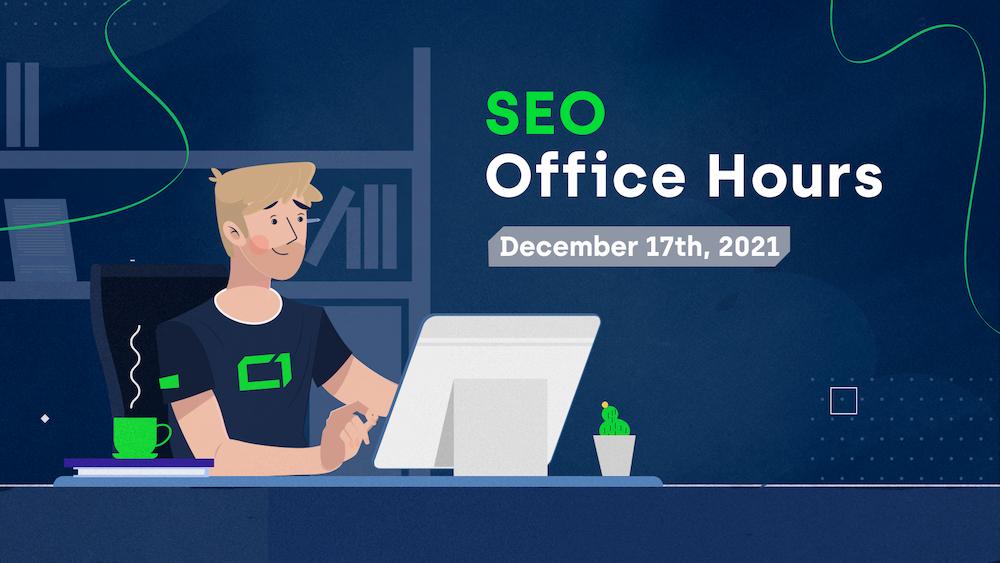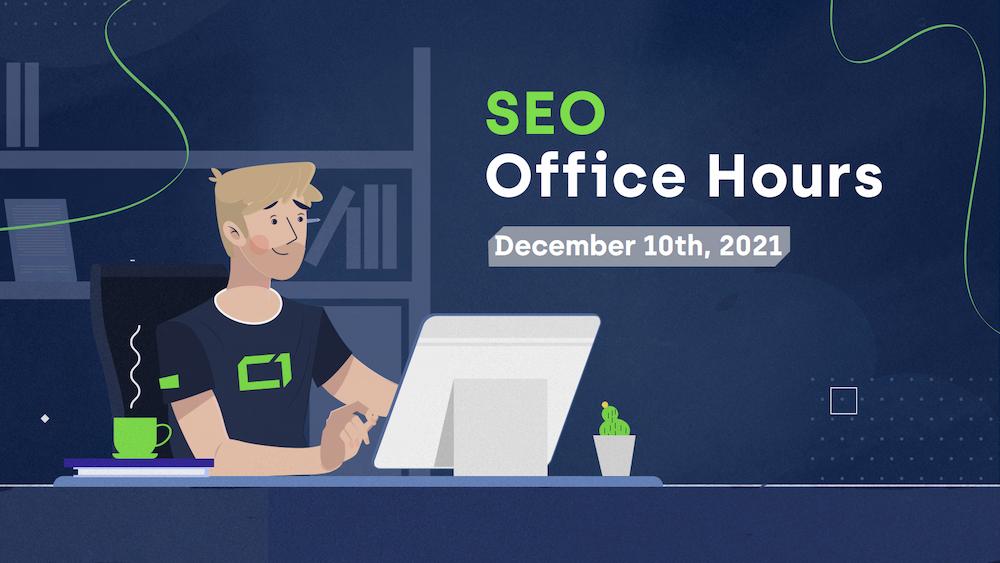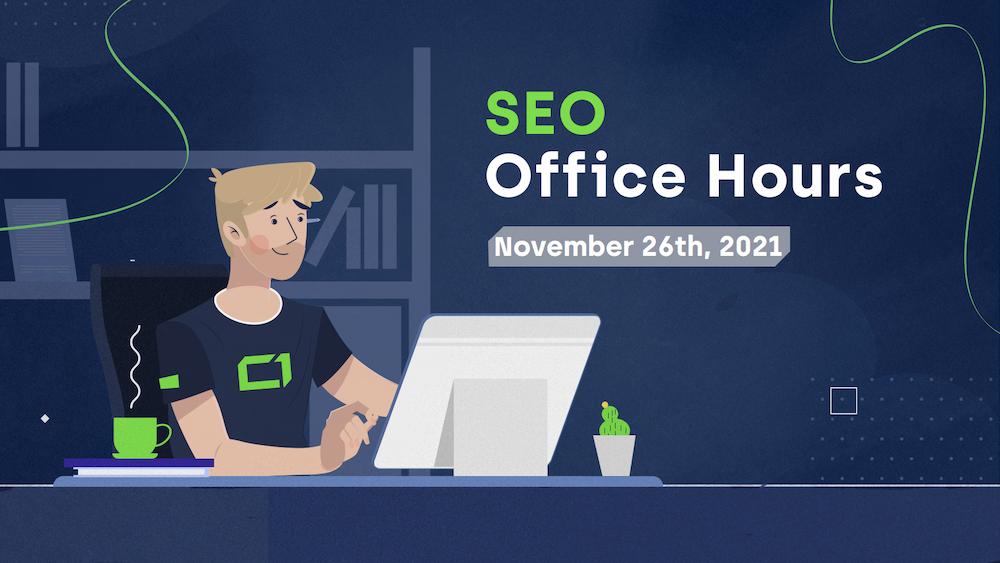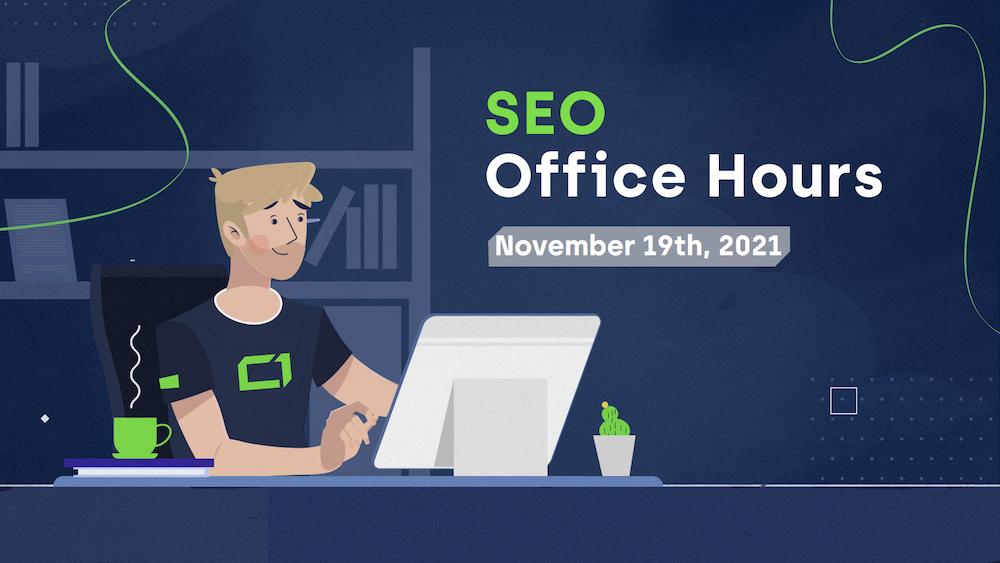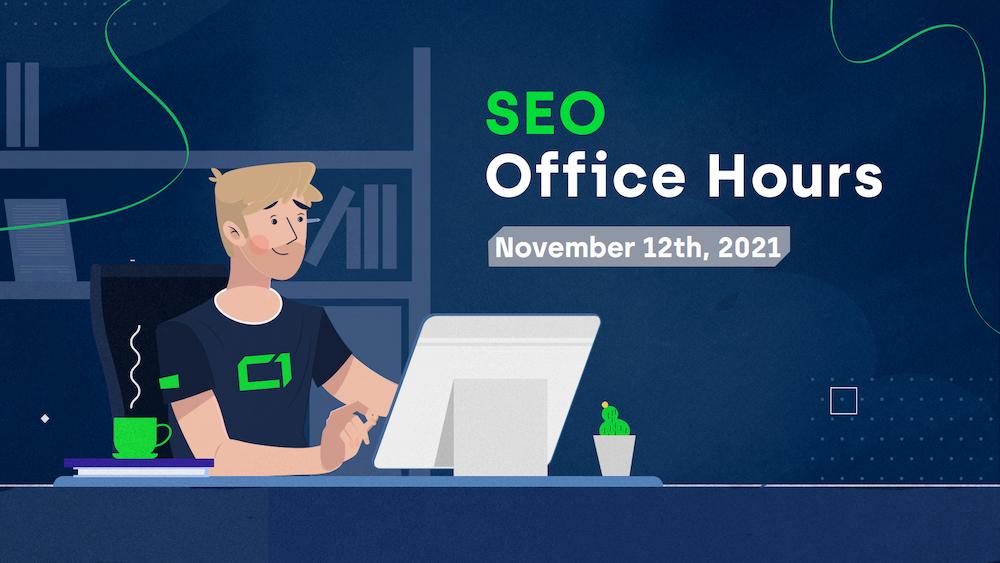This is a summary of the most interesting questions and answers from the Google SEO Office Hours with John Mueller on December 17th, 2021.
Font file causing Cumulative Layout Shift
06:58 “We have been working on CLS problems for a couple of months now. […] There’s one thing popping up randomly out of nowhere. Is it possible that the font could cause a Cumulative Layout Shift issue?”
John answered, “It could be. I’m not an expert on the CLS side of things, but […] if you’re using an external font file, then that file has to be loaded. And depending on how you display the content, it might be that you display the version of the content without the font file first, and then it loads the font and shifts the layout around.”
During the latest Chrome Dev Summit, a new CSS property called size-adjust was introduced. Its goal is to prevent the layout shift caused by the font. If you’re interested in learning more about it, you should check out the web.dev article on CSS size-adjust for @font-face.
To sum up the question, John recommended a useful tip to check if the font is actually causing a layout shift: “…in Chrome Developer Tools, you can do things like block the URL of the font file, load the page and compare it [with each other].”
503 can cause URLs to drop out of the index
14:29 “My paid team were doing paid ads with Pinterest and caused a massive issue where Pinterest were crawling our website and putting our servers into overload. We figured out the problem, we blocked Pinterest […], but we got a few hundred pages that are now still on a 503 in Google Search Console. […] I’ve gone through the pages – they’re all working. So I’ve had the re-validation that’s been going on for the last two days. What sort of timescales are we looking at? Could I resubmit sitemaps to get it to work quicker?”
John said, “If the [503 was there] for less than a day, then we would probably automatically pick that up and retry again.
If it’s more than a couple of days, then it can happen that the URL drops out of the index because we think it’s more of a persistent server error. It essentially needs to wait until we recrawl that URL again, which, depending on the URL, can happen after a couple of days. Maybe it takes a week or so to kind of be recrawled. But essentially, that’s something where it goes through the normal recrawling process and then picks up again.
So what I would usually do with a situation like this is look at the errors that you see in Search Console, try to prioritize them, and figure out if there are any that are really critical for you. If they’re random, long-tail landing pages on your site, then I would just let them get recrawled over time. If they’re important pages, then I would do things like resubmitting them in Search Console directly manually.”
At the end of the question, John added that resubmitting the sitemap probably wouldn’t help: “Resubmitting the sitemap file isn’t really a strong signal for us. We would look more at the date in the sitemap file. And if you just manually update all the dates to say, oh, we changed it today to encourage Google to pick it up again, then we’ll look at the sitemap file and say, all the dates are the same, this is not really useful.”
Wrong language version shown to users
29:02 “We have two country websites that share common content, including daily news. We notice from time to time that the wrong news page is ranking in the corresponding country – for example, a DE (Germany) in Switzerland. Does it make sense to work with hreflang in the news area as well?“
John replied: “I think just purely from the point of view that you have different versions of content and you see the wrong version sometimes in search, that is essentially the situation that hreflang tries to solve. […] That seems like the perfect scenario for implementing hreflang tags.
The other thing to remember is that geotargeting (and even hreflang) is never perfect. So if you are very reliant on the right version being shown to the right users, then you always need to have some sort of a backup plan. And my recommendation for backup is usually that you have some kind of a JavaScript-powered banner on top or on bottom, or somewhere that essentially says, hey, we have a better version of this content for you, specifically for your location, for your language, and link to it from there. That way, we can still crawl and index all of the different versions, but users, when they end up on the wrong version, can quickly find their way to the correct version.”
Find out more about hreflang and geotargeting in our International SEO article.
Translating only part of your website
31:22 “We run a website with 300 indexed pages, all in US English. We’re looking to translate half of these pages to Spanish, which will be placed in a subdirectory on the same domain and tagged as alternate language versions of the US content. Is it OK to translate only some of the website’s content? […] Is it an issue if the Spanish version of a page links internally to content that is in English?”
John said, “When we look at language, we look at that on a per-page basis. […] So we essentially look at an individual page and say, well, it looks like this page is in Spanish. And then when someone searches for something Spanish, we will be able to show that to them. It doesn’t matter if only a part of your website is translated into a different language. Usually, you start somewhere, and you kind of expand from there.
I think the aspect of internal linking could be a bit tricky. It could provide a bad user experience if your internal linking focuses on the English version. I think that’s pretty common across a lot of different websites. […] I would try to make sure that the Spanish version is also properly interlinked.”
Resolve your doubts and contact Onely for thorough internal linking optimization.Let us help you with optimizing internal links!
Google can figure out a simpler version of URLs
37:06 “Does Google treat URLs with a question mark at the end as duplicates of the same URL without a question mark at the end?”
John wasn’t sure about the answer to that question. However, he explained an interesting scenario he called “lightweight canonicalization.”
John said, “For the most part, if you have parameters at the end or no parameters at the end, we will treat those as clearly separate URLs. But we do have some systems in place that try to do some almost lightweight canonicalization for you. They try to figure out what simpler version of this URL could we actually be showing, even if the website itself doesn’t provide a rel=”canonical” or it doesn’t redirect to a simpler version of a URL.”
To explain the situation more, John gave an example of an index.html page. If you have a homepage with an URL like website.com/index.html, Google might decide that the index.html at the end is essentially irrelevant and drop it automatically to simplify the URL to just website.com.
Google doesn’t penalize adult sites
39:45 “My website has recently been dropped for a few very important keywords in our primary niche – adult toys. […] Does Google penalize adult sites for certain queries?”
John replied, “I don’t think we penalize adult websites in that regard. But we do have systems in place that try to figure out if the query’s intent is actually to find something that would fall into the category of, maybe, adult content. And if the intent is clearly not for someone to find adult content with that kind of a query, […] we would try to filter those things out.
And that’s something that usually makes a lot of sense because sometimes there are adult websites named very similarly […] to things that are, maybe, child’s toys. And you wouldn’t want someone who’s looking for a child’s toy to actually run into an adult toy website just because it’s ranking for the same term.
Our systems try to silently figure out what the intent is behind certain queries and then to kind of adjust that so that we show something that matches a little bit more what the perceived intent is.
Understanding what the intent is behind a query is really hard. And we also get it wrong sometimes. […] So it’s not so much that Google has something against adult websites. There are lots of them out there, and people find them and search for them explicitly as well. That’s all perfectly fine. But we really just want to make sure that our search results are such that they match what people expect.”
Mentions of your brand don’t affect your website’s ranking
58:12 “[…] What if a lot of pages that are mentioning you and saying you are a scam, are actually spam pages created by people intending to hurt you? Does Google know how to handle that?”
John said, “I think that’s also one of the reasons why it’s really hard to use anything like that with regards to rankings. Understanding almost the subjective context of the mention is really hard. Is it like a positive mention or a negative mention? Is it a sarcastic positive mention or a sarcastic negative mention? Like, how can you even tell?
And all of that, together with the fact that there are many spammy sites out there, […] makes it really hard to say we can just use [brand mentions] the same as a link. So from that point of view, […] we don’t mention it as something that positively affects your website or negatively affects your website. It’s just too confusing to use as a clear signal.”

Hi! I’m Bartosz, founder and Head of SEO @ Onely. Thank you for trusting us with your valuable time and I hope that you found the answers to your questions in this blogpost.
In case you are still wondering how to exactly move forward with fixing your website Technical SEO – check out our services page and schedule a free discovery call where we will do all the heavylifting for you.
Hope to talk to you soon!
